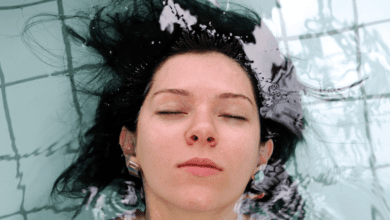Why Progesterone Is Both Good and Bad for Mood (and How to Treat PMDD)

Progesterone is usually a mood reliever but can sometimes cause anxiety.
A negative mood reaction to changing progesterone levels is called neurosteroid change sensitivity o premenstrual dysphoric disorder (PMDD) and affects about one in twenty women.
Also, check out the Top 6 natural treatments for premenstrual mood symptoms.
Contraceptive progestin drugs are bad for mood
Progestins are not the same as the body’s own progesterone, so should not enter into this conversation. Unfortunately, many doctors, journalists, and even scientists confuse progestins with progesterone and say, “progesterone is bad for mood,” when what they really mean is Progestins are bad for mood.
Contraceptive progestins like levonorgestrel, drospirenone, and norethisterone are all associated with anxiety and depression, but the mood symptoms from birth control are drug side effects, not PMS or PMDD.
Progesterone and the brain
For most women, Progesterone is good for mood because it converts to something called a neurosteroid allopregnanolone, which relaxes GABA receptors. The calming neurosteroid effect of progesterone is the reason why Progesterone capsules are usually sedating and why women may feel sleepy during times of high progesterone, such as the early luteal phase and pregnancy. Progestins do not convert to allopregnanolone, so progestins cannot improve mood like progesterone.
For women with PMDD, allopregnanolone does not calm GABA receptors but instead can stimulate them in a way that causes anxiety and other negative mood symptoms. It’s not that women with PMDD have more allopregnanolone; Actually, they may be less. Instead, their GABA receptors seem to be abnormal response to allopregnanolone.

GABA receptors are made up of five subunits that reshuffle and change configuration to adapt to the normal rises and falls of allopregnanolone. In PMDD, the GABA receptors are less flexible in changing allopregnanolone levels. The result, according to researcher Tory Eisenlohr-Moulis neurosteroid change sensitivity and the mood symptoms of PMDD.
Another factor is the discovered that progesterone can cause intestinal permeability, leading to elevated LPS endotoxin and negative mood symptoms in the luteal phase. According to research, women are more at risk of this endotoxin effect if they have an underlying problem of chronic progesterone deficiency and high estrogen.
Gentle treatment of PMDD
Traditional treatments for PMDD include:
- SSRI antidepressants to alter GABA receptors and/or
- hormonal birth control to shut down ovulation and progesterone.
The problem with this approach is:
How to take progesterone for premenstrual mood symptoms
The better approach is to stabilize the GABA receptors and, therefore, be able to tolerate the normal rise and fall of progesterone.
It is also possible take progesterone. For women with mild premenstrual symptoms (PMS rather than PMDD), low-dose progesterone (such as progesterone cream) can relieve premenstrual mood symptoms by relieving “progesterone withdrawal.” o “GABAergic withdrawal” that occurs at the end of the cycle.
For women with neurosteroid change sensitivity and PMDD, higher doses of progesterone (200 mg) may work better than lower doses. That’s because of the bimodal association between serum allopregnanolone and adverse mood, which found that in women with PMDD, normal endogenous progesterone levels were the worst for mood, but above endogenous levels (like 200 mg) might be better. Very high doses above 400 mg are likely to cause depression in anyone, and unfortunately, some studies of progesterone for premenstrual mood all used excessively high dose of 400 to 1200 mg.
Natural treatment of PMDD
As I discuss in my summary blog post and podcast/YouTube video about premenstrual mood symptoms, other treatment strategies include:
👉 Tip: For many of my patients, avoiding dairy cows is the fastest way to reduce a mast cell or histamine reaction. Avoiding A1casein (and its inflammatory opioid peptide BCM7) may also improve GABA levels.
👉 Tip: The therapeutic dose is 300 mg of elemental magnesium, so read the label carefully. Most magnesium capsules contain 100 mg.
👉 Tip: I get the best results with magnesium, vitamin B6, and the amino acid taurine (because taurine calms GABA receptors).






